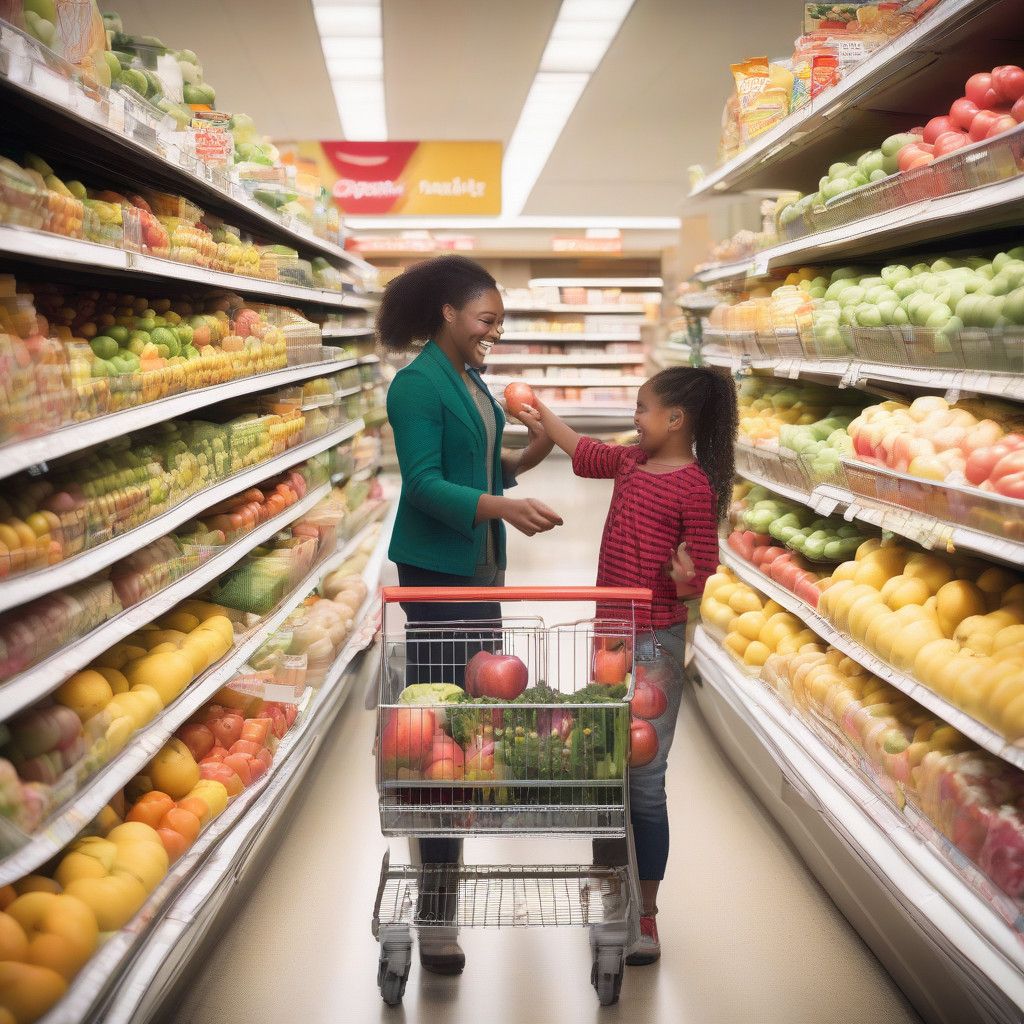According to a recent report by consumer insights firm Circana, Supplemental Nutrition Assistance Program (SNAP) households are spending 32% more per buyer compared to their non-SNAP counterparts. This 1% year-over-year increase highlights the resilience and evolving buying behaviors of SNAP consumers, presenting significant opportunities for retailers and Consumer Packaged Goods (CPG) manufacturers.
The report, titled “Understanding the Resilience of SNAP Shoppers,” uncovers valuable insights into the shopping habits of this demographic, which represents one in eight Americans reliant on SNAP for nutritional support. Even amid economic challenges, SNAP shoppers continue to significantly contribute to the grocery market, accounting for 20% of market share primarily in value-based channels.
Understanding the Spending Habits of SNAP Shoppers
While it is clear that SNAP shoppers spend more overall, it is important to understand the nuances of their purchasing behavior. Despite making 22% more store trips on average than non-SNAP households, SNAP consumers tend to spend less per visit. The restrictions on eligible purchases often lead them to focus on food and beverage items, favoring convenience and functional hydration products. When evaluating brand loyalty, SNAP shoppers demonstrate a notable preference for name brands, as indicated by their consistent higher dollar spend on these items despite private-brand spending being nearly equivalent to non-SNAP levels.
Sally Lyons Wyatt, global EVP and chief advisor at Circana, emphasized the importance of this demographic by stating, “SNAP participants have shown incredible resilience over the past year… This group represents a critical segment for retailers and manufacturers.” As businesses look to engage this consumer base effectively, it is crucial to tailor strategies that recognize their unique shopping patterns.
Strategic Opportunities for Retailers and Manufacturers
To effectively attract and retain SNAP shoppers, retailers should consider implementing targeted strategies that align with their preferences and habits. One approach is co-promoting “occasion deals” that include both name brands and private-label products. This strategy can increase basket sizes while delivering perceived value to SNAP consumers. Furthermore, maintaining affordability in pricing is essential; SNAP shoppers prioritize accessible meal solutions year-round.
For stores experiencing a decline in both spending and foot traffic, employing thoughtful pricing strategies and timing promotions effectively can prove vital in retaining shopper loyalty. Engaging shoppers through social media campaigns and offering discounts for bulk purchases can also help drive sales in categories gaining both dollars and units.
Timing and Educational Resources
Aligning local marketing initiatives with SNAP payment schedules can further enhance purchasing frequency. Many SNAP recipients rely on a just-in-time buying strategy; hence, retailers can benefit from tailoring meal and appliance solutions that emphasize convenience. Utilizing U.S. Department of Agriculture SNAP education materials can guide shoppers in finding economical ways to eat healthily while managing their budgets.
Recent findings from a DoorDash survey highlight that grocery delivery services can boost access to nutritious food options for SNAP recipients. This delivery model not only saves time but also streamlines the process of obtaining affordable meals, reinforcing the necessity for retailers to integrate delivery services within their offerings.
Growth in Food and Beverage Categories
As Circana forecasts growth in multiple food and beverage categories driven mainly by SNAP shoppers, businesses need to focus on the right product assortments, strategic pricing, and optimal in-store placement to support these consumers effectively. By doing so, CPG manufacturers and retailers can not only satisfy the immediate needs of SNAP households but also tap into significant growth opportunities that lie ahead.
Research indicates that creating meal solutions that resonate with SNAP shoppers’ preferences can play a crucial role in meeting their demands. Simple, cost-effective meal preparations and accessible hydration options will likely create immediate and lasting impacts.
Conclusion
In conclusion, the data from Circana demonstrates that SNAP shoppers are not just resilient but also influential players in the retail market. By understanding their unique spending behaviors and crafting specific strategies that cater to their needs, retailers and manufacturers can establish a strong connection with this demographic. The expected growth in food and beverage categories throughout the upcoming year serves as a reminder of the strategic importance that comes with successfully engaging SNAP shoppers.
